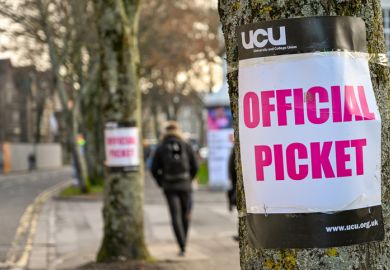In a paper published in Organizational Behavior and Human Decision Processes, I and my co-authors examined the impact of job candidates’ physical attractiveness and decision-makers’ self-interested motives in selection, through four experiments.
We found that good-looking male candidates were stereotyped as more competent than less good-looking ones. However, interacting with gender stereotypes, female candidates’ looks did not affect their perceived competence.
We extended beyond the previous research on the role of stereotypes in selection decisions and predicted that men’s good looks, which are associated with competence, had different effects on decision-makers’ preferences depending on the working relationship expected with the candidate. Would they have to cooperate or compete?
While bosses and colleagues, who expect to cooperate, may find good-looking male candidates helpful to their self-interests, those who expect competition may view them as strong competitors and thus threatening. Supporting our predictions, across all studies, good-looking male candidates were preferred when cooperation was expected, but the pattern reversed when competition was expected.
So what might this tell us about recruitment practices in the higher education sector?
In a number of institutions, faculty and other members – rather than any third parties – play a key role in recruiting their future peers. Institutions, and also decision-makers themselves, need to be aware that certain cultures and reward systems may encourage hiring decisions that serve self-interests rather than the organisation’s goal of bringing in the best candidates.
For example, junior faculty members working in an institution where tenure processes are highly competitive may feel threatened when they interview candidates for junior faculty positions who appear more competent (and as we have seen, this can correlate with attractiveness).
Even when rewards systems and cultures are collaborative, some decision-makers may feel like hiring a candidate who is most likely to help their own career success even though the candidate’s fit with the institution isn’t as good as other candidates that are also available.
Awareness might be a good remedy, as I believe that we often tend to make self-interested decisions without even knowing it. Engaging different levels of institutional members and external representatives in recruitment processes can help enormously to improve procedural fairness and selection outcomes.
The best news is that, in this sector, candidates’ work-related qualification, typically decided by research – for instance, the number of top publications in which their work has been published – and teaching performance, such as course ratings, is somewhat unambiguous. This means that there may be fewer concerns that recruiters rely on candidates’ looks or other social group memberships such as age to infer candidates’ competence.
Sun Young Lee is an assistant professor of organisational behaviour at the University College London School of Management. Her research was carried out with researchers from the University of Maryland, London Business School, and Insead.
Register to continue
Why register?
- Registration is free and only takes a moment
- Once registered, you can read 3 articles a month
- Sign up for our newsletter
Subscribe
Or subscribe for unlimited access to:
- Unlimited access to news, views, insights & reviews
- Digital editions
- Digital access to THE’s university and college rankings analysis
Already registered or a current subscriber?




